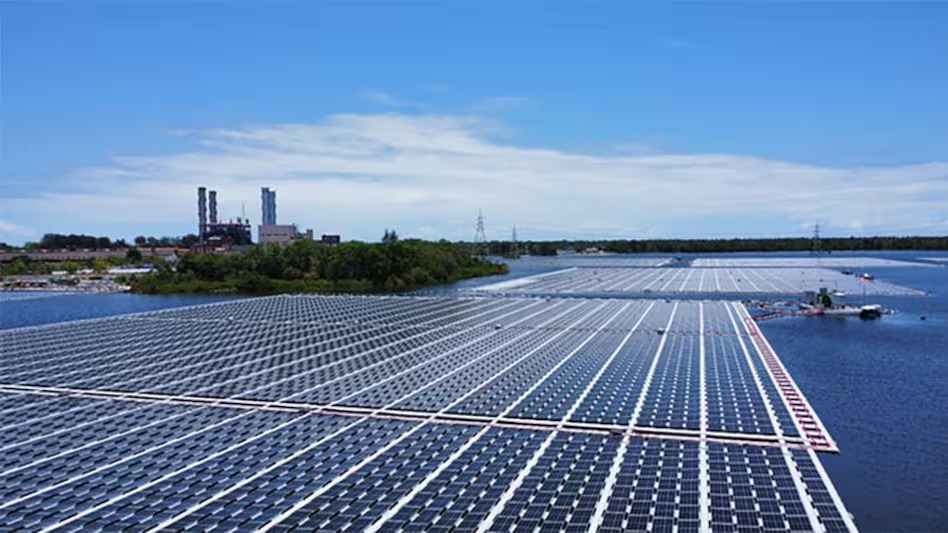India Achieves 3rd Spot In Solar Power Generation, Overtakes Japan

India Achieves 3rd Spot In Solar Power Generation, Overtakes Japan
From ranking 9th in 2015, India has witnessed a sudden rise, with solar power now accounting for a remarkable 5.8 per cent of its electricity generation in 2023, up from a mere 0.5 per cent just eight years prior, which is an impressive growth.
10 May 2024
By Ishika Kumar
In a monumental leap forward for renewable energy, India has eclipsed Japan to become the world’s 3rd largest solar power generator in 2023, according to the latest findings from Ember, which is a global energy think tank.
Rapid Expansion and Global Impact
India’s ascent in solar energy production accentuates its steadfast commitment to clean energy and its pivotal role in the global transition towards sustainable power sources. From ranking 9th in 2015, India has witnessed a sudden rise, with solar power now accounting for a remarkable 5.8 per cent of its electricity generation in 2023, up from a mere 0.5 per cent just eight years prior, which is an impressive growth.
Global Trends in Solar Growth
The Global Electricity Review 2024, released alongside Ember’s report, paints a vivid picture of solar power’s surging prominence worldwide. Solar energy’s share of global electricity production surged to a record 5.5 per cent in 2023, marking its 19th consecutive year as the fastest-growing electricity source globally.
India’s Impressive Surge in Solar Generation
Ember’s analysis reveals that India experienced the world’s 4th largest increase in solar generation in 2023, with a remarkable uptick of (+18TWh or Terawatt Hours). This surge places India behind only China with (+156 TWh), the United States with (+33 TWh), and Brazil with (+22 TWh), in terms of solar growth globally. These four countries collectively drive 75 per cent of the global solar expansion.
Challenges and Opportunities Ahead
While India’s achievements in solar energy are commendable, challenges emerge on the horizon. The nation’s ambitious target to achieve 50 per cent of its cumulative electric power installed capacity from non-fossil fuel-based energy resources by 2030 necessitates a significant acceleration in annual capacity additions and reliability on solar power as the next best alternative to achieve that goal.
International Commitments and Collaborations
At the forefront of the global effort to combat climate change, India stands among the select few nations actively working towards the goal set at COP28 to triple global renewable energy capacity by 2030. This aligns with the imperative to limit the average temperature rise to 1.5 degrees Celsius, as emphasised by world leaders at the climate change conference.
Outlook for the Future
Looking ahead, the International Energy Agency (IEA) projects that solar power will constitute a substantial 22 percent of global electricity generation by 2030. Such projections highlight the pivotal role of solar energy in mitigating climate change and meeting the escalating energy demands of an increasingly electrified global economy which knows no bounds in terms of usage and consumption.
India’s Policy Initiatives and Investments
India’s remarkable surge in solar energy deployment is underpinned by robust policy initiatives and significant investments in renewable energy infrastructure. The country’s National Solar Mission has generated 70.10gigawatts (GW) of solar power by 2023, with further ambitious targets beyond that.
Technological advancements and innovations have played a crucial role in driving down the costs of solar energy production, making it increasingly competitive with traditional fossil fuel-based sources. India has leveraged these advancements to accelerate its transition towards clean energy.
Socio-Economic Impact of Solar Expansion
The expansion of solar energy in India has not only contributed to environmental sustainability but also fostered socio-economic development. The proliferation of solar farms and rooftop solar installations has created jobs, particularly in rural areas, while simultaneously reducing dependence on imported fossil fuels.
Addressing Challenges in Solar Integration
Despite its rapid growth, solar energy integration poses certain challenges, including intermittency and grid stability issues. India is actively addressing these challenges through the deployment of energy storage solutions, grid modernization initiatives and demand-side management strategies.
Global Collaboration for Renewable Energy
India’s efforts for renewable energy extend beyond its borders, with the nation actively participating in international collaborations and initiatives to promote clean energy adoption worldwide. This is done through partnerships such as the International Solar Alliance, and many summits which keep taking place for global leaders to collectively enact upon climate change and sustainable development. India is leveraging its expertise to facilitate global solar energy deployment.
Conclusion
India’s remarkable ascent to the third spot in solar power generation heralds a new era of clean energy dominance on the global stage. As the nation continues to bolster its renewable energy infrastructure, it not only paves the way for a sustainable future but also sets a shining example for nations worldwide to follow suit in the fight against climate change. With steadfast determination and concerted efforts, India is poised to lead the charge towards a cleaner, greener and more sustainable energy landscape for generations to come.








